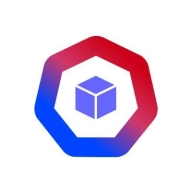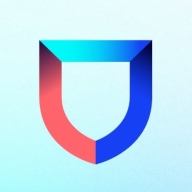


Lacework FortiCNAPP and AccuKnox Platform are competitors in the cybersecurity sector. AccuKnox has the advantage for its robust security features and zero-trust architecture, which provide higher perceived value compared to FortiCNAPP's cost-effective solutions.
Features: Lacework FortiCNAPP provides advanced threat detection, automated anomaly detection, and comprehensive cloud security, promoting rapid incident responses. AccuKnox Platform offers granular policy enforcement, zero-trust model adoption, and policy automation, highlighting its configurability and tailored security protocols.
Ease of Deployment and Customer Service: Lacework FortiCNAPP has straightforward deployment and reliable customer support, aiding smooth integration into existing systems. AccuKnox Platform requires a more complex deployment process, enhanced by extensive support and consultancy to ensure optimal implementation. FortiCNAPP suits rapid deployment needs, while AccuKnox offers customizable setups.
Pricing and ROI: Lacework FortiCNAPP focuses on cost-effective security with scalable pricing models to enhance ROI. AccuKnox, with a higher initial setup cost, targets significant ROI through its enterprise-level security alignment, promising higher long-term value perception for organizations investing more upfront.
| Product | Market Share (%) |
|---|---|
| SentinelOne Singularity Cloud Security | 3.1% |
| Lacework FortiCNAPP | 1.9% |
| AccuKnox Platform | 0.3% |
| Other | 94.7% |



| Company Size | Count |
|---|---|
| Small Business | 44 |
| Midsize Enterprise | 21 |
| Large Enterprise | 53 |
| Company Size | Count |
|---|---|
| Small Business | 4 |
| Midsize Enterprise | 4 |
| Large Enterprise | 3 |
SentinelOne Singularity Cloud Security offers a streamlined approach to cloud security with intuitive operation and strong integration capabilities for heightened threat detection and remediation efficiency.
Singularity Cloud Security stands out for its real-time detection and response, effectively minimizing detection and remediation timelines. Its automated remediation integrates smoothly with third-party tools enhancing operational efficiency. The comprehensive console ensures visibility and support for forensic investigations. Seamless platform integration and robust support for innovation are notable advantages. Areas for development include improved search functionality, affordability, better firewall capabilities for remote users, stable agents, comprehensive reporting, and efficient third-party integrations. Clarity in the interface, responsive support, and real-time alerting need enhancement, with a call for more automation and customization. Better scalability and cost-effective integration without compromising capabilities are desired.
What are SentinelOne Singularity Cloud Security's standout features?SentinelOne Singularity Cloud Security is deployed in industries needing robust cloud security posture management, endpoint protection, and threat hunting. Utilized frequently across AWS and Azure, it assists in monitoring, threat detection, and maintaining compliance in diverse environments while providing real-time alerts and recommendations for proactive threat management.
AccuKnox Platform enhances application security and compliance by focusing on container security, network activity monitoring, and security policy enforcement. Its seamless Kubernetes integration and real-time alerts are highly valued.
AccuKnox Platform offers robust performance in threat detection and simplifies policy management, aiding users in reducing vulnerabilities and securing workloads efficiently. Its seamless deployment and compatibility with cloud environments, combined with comprehensive monitoring and reporting tools, contribute to enhanced operational efficiency. Users also appreciate the platform's real-time threat detection and easy deployment.
What are the key features of AccuKnox Platform?AccuKnox Platform is implemented across industries such as finance, healthcare, and technology, where high levels of security and compliance are essential. Organizations leverage its robust features to protect sensitive data, ensure regulatory compliance, and maintain operational efficiency even during peak times.
Lacework FortiCNAPP provides robust cloud security, combining vulnerability management and multi-cloud insight with user-friendly controls, machine learning detection, and compliance support.
Lacework FortiCNAPP specializes in cloud security by merging machine learning anomaly detection with agent-based vulnerability management to offer detailed alerts and compliance reports. Its comprehensive approach allows continuous monitoring across AWS and Kubernetes, providing insights from an attacker's perspective. The platform offers automation and seamless Slack integration, facilitating collaborative and efficient cloud security management. Users value its ability to handle multi-cloud environments and scan IAC scripts, configurations, and compute nodes across AWS and GCP.
What are the key features?Organizations across sectors leverage Lacework FortiCNAPP for cloud security, focusing on compliance, security posture, and vulnerability management. It is widely used for monitoring AWS and Kubernetes environments, scanning IAC scripts, configurations, and securing compute nodes. It supports multi-cloud security posture management and log ingestion, enabling companies to maintain strong cloud infrastructures without dedicated security layers.
We monitor all Container Security reviews to prevent fraudulent reviews and keep review quality high. We do not post reviews by company employees or direct competitors. We validate each review for authenticity via cross-reference with LinkedIn, and personal follow-up with the reviewer when necessary.